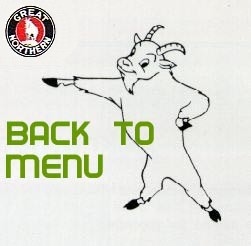|


| |

Love of the wilderness was in the blood of Frank Bird Linderman.
The first Linderman to land in America came in 1690. Lindermans
pioneered in New York State, in Pennsylvania and Ohio. When as a
boy, Frank Linderman reached the shores of Flathead Lake, fifty years
ago, he was seeking not the "Wild West" of cow towns and mining
camps, but the wilderness. There he learned Indian ways and lived as
they did. To know them better he mastered the sign language—an
accomplishment which caused him to be known among them as Sign-
talker, sometimes Great Sign-talker.
The first Indian he ever talked to was Red-Horn, a renowned Flathead.
Linderman's account of their meeting, the inception of a lifelong
friendship, is moving and beautiful. The boy didn't know a Flathead
from a Kootenai, nor whether Indians were friendly or hostile, and of
course the sign language was Greek to him; but he recalled long
afterward that Red-Horn had been at great pains to impress him with the
fact that he was a Flathead, not a Kootenai—who were hostile—telling
him this in sign language over and over.
"No greater tenderfoot ever entered the wilderness than I," Linderman
says, "and I am sure none ever took to the life more surely or more
happily." Indians have always been his friends, though he did have
some trouble with the Kootenais in the eighties, and a breathless
narrative the story of that trouble is.
Linderman's Blackfeet name is Iron-tooth. The Crows call him
Sign-talker. The old Kootenais named him Bird-singer and the early
Crees and Chippewas called him Sings-like-a-bird. His name is one
to conjure with among the Crees and Chippewas. They call themselves
Linderman Indians, because—wrung by their pitiable homelessness—
he was instrumental in wresting from a dilatory and indifferent
Government the Rocky Boy (Stone Child's) reservation near Havre, Montana.
Twenty years ago Linderman went back to the shores of Flathead
lake. At Goose Bay, where he had trapped with the Indians, he built
a spacious lodge for his family. He now retired from business to devote
his time to writing—that he might 'record the Indian way of life that
had passed; a culture no white man could ever again have opportunity
to observe. His INDIAN WHY STORIES, AMERICAN, RED MOTHER,
MORNING LIGHT—twelve books carry that record. Linderman knows
the plains Indian as few men have capacity for knowing him. He
knows the Indian too well to assume that he; or any man, can wholly
grasp the mystic and spiritual significance of Indian culture. He has a
fury of scorn for the superficial and faked "knowledge" that distorts
and misrepresents and cheapens the story.
His lodge reflects the varied interests of his life. There one finds
Indian artifacts, never to be duplicated, gifts from the great of their
tribes; mementoes of the time when by sheer determination to know
he made himself assayer of the old Curlew mine, and ended as chief
assayer and chemist for the Butte and Boston smelter; cartoons of his
unprized political life, when he sat in the State Legislature, or served as
Deputy and Acting Secretary of State; and his manuscripts which are
his being. Above all, his home reflects the happiness of his domestic
life, and the memory of enduring friendships. Daughters and grand-
children visit Mr. and Mrs. Linderman there.*
But the Indians of his boyhood come no more. Their campfires are
burning for him among the Sandhills.
by GRACE STONE COATES
* Mr. Linderman died on May 12th, 1938.
 
|